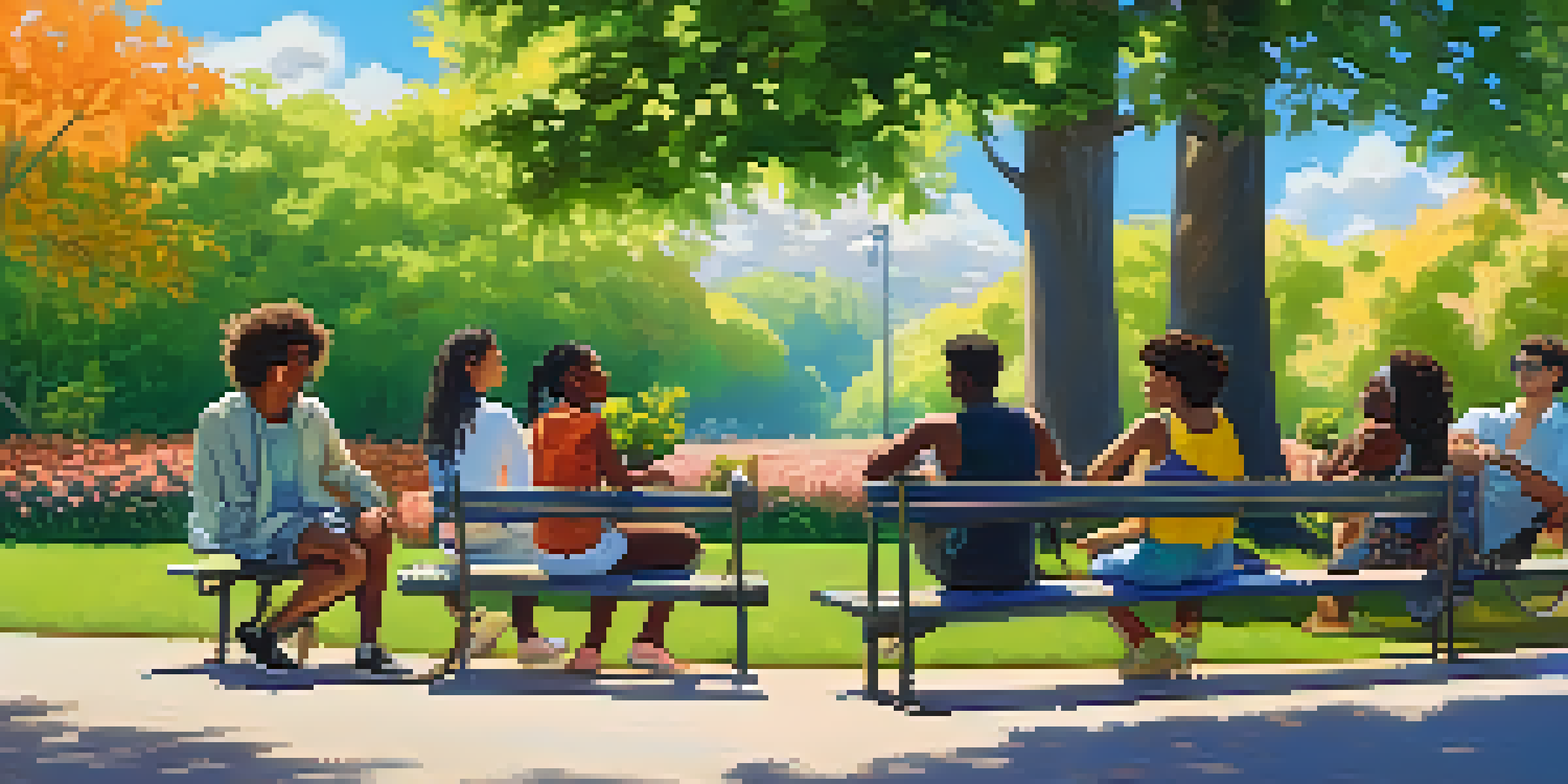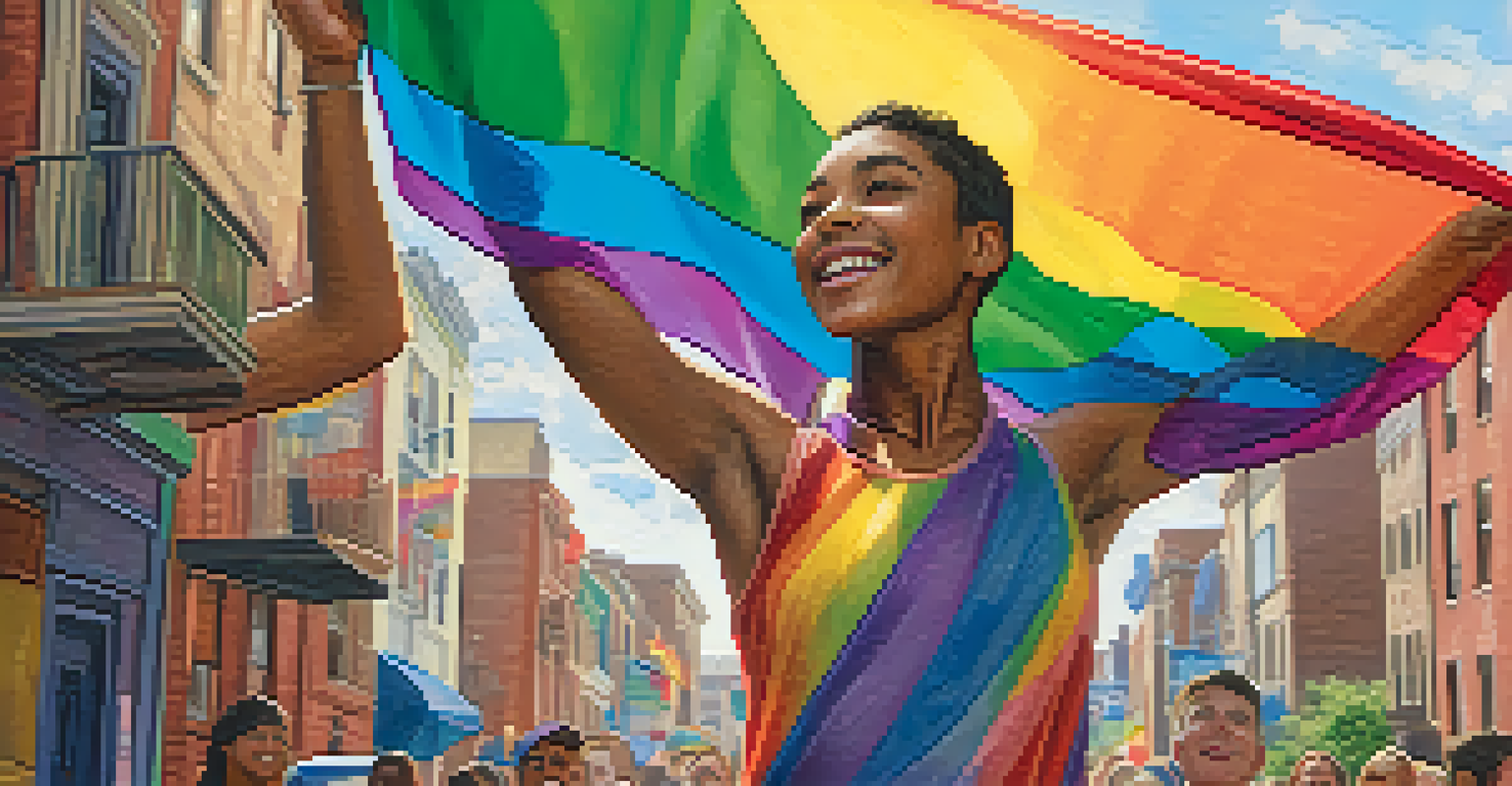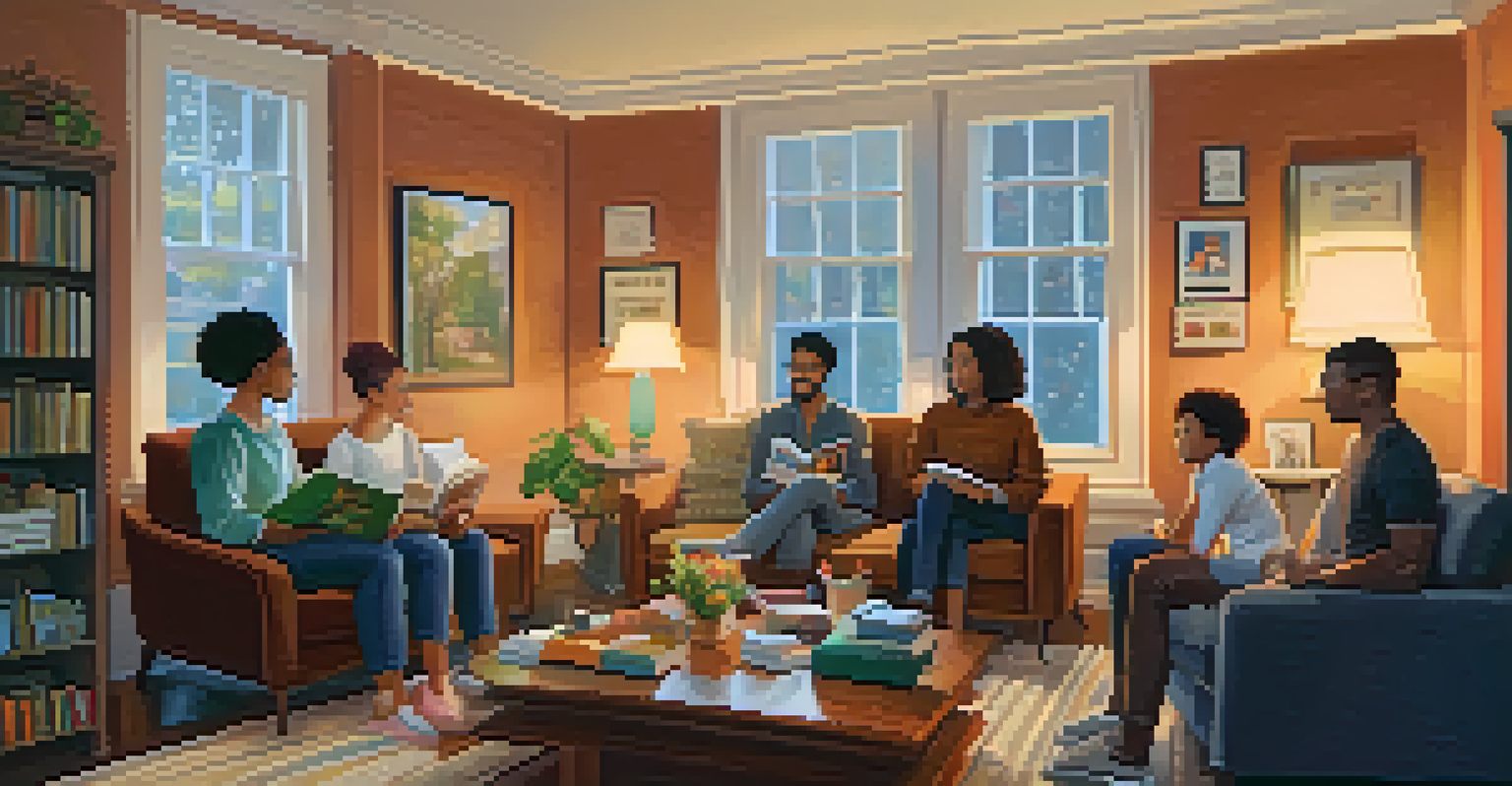Impact of LGBTQ+ Representation on Young Audiences

Understanding LGBTQ+ Representation in Media
LGBTQ+ representation in media refers to the inclusion of characters and stories that reflect the diverse experiences of the LGBTQ+ community. This representation can be found in television shows, movies, books, and even video games. By showcasing these narratives, media can help normalize LGBTQ+ identities and experiences for audiences of all ages, particularly young viewers.
Representation matters. It’s about showing the world as it truly is—diverse and vibrant.
When young people see characters who identify as LGBTQ+, it sends a powerful message that their identities are valid and worthy of representation. This can be particularly impactful for those who may be questioning their own sexuality or gender identity. Representation provides a sense of belonging and validation that can be crucial during formative years.
Additionally, LGBTQ+ representation can foster empathy and understanding among young audiences who may not identify as part of the community. By engaging with diverse stories, they learn to appreciate different perspectives and develop a more inclusive worldview.
The Positive Effects on Self-Identity
For many young people, seeing LGBTQ+ characters in media can significantly impact their journey toward understanding their own identities. When they encounter relatable characters, it can help them feel less alone in their experiences. This validation can encourage self-acceptance and confidence, which are essential for healthy development.

Moreover, positive representation can combat feelings of isolation that some LGBTQ+ youth experience. By recognizing themselves in media, they are reminded that their feelings and experiences are shared by others. This sense of community can be incredibly comforting during challenging times.
Empowering Youth Through Representation
LGBTQ+ representation in media validates young people's identities and fosters self-acceptance.
Ultimately, this representation can empower young audiences to embrace their authentic selves, fostering a culture of acceptance and pride. Knowing that they are not alone can motivate them to explore their identities more openly.
Challenging Stereotypes Through Representation
LGBTQ+ representation plays a crucial role in challenging and dismantling harmful stereotypes. When media portrays LGBTQ+ characters as multidimensional individuals with unique stories, it helps to break down the simplistic and often negative portrayals that have historically existed. This shift is vital for changing societal perceptions.
When we see our stories reflected in the media, we feel seen, valued, and understood.
For instance, when LGBTQ+ characters are depicted in a variety of roles—beyond just the stereotypical tropes—young audiences can see that these individuals are just as complex as anyone else. This nuanced depiction fosters a more accurate understanding of LGBTQ+ lives, which can encourage acceptance and reduce prejudice.
By challenging stereotypes, media can help create a more inclusive environment where young audiences learn to appreciate diversity in all its forms. This understanding is crucial in promoting respect and equity for everyone, regardless of their sexual orientation or gender identity.
Building Empathy Among Young Viewers
Empathy is a vital skill for navigating the complexities of human relationships, and LGBTQ+ representation in media can enhance this trait among young audiences. When viewers connect with LGBTQ+ characters and their stories, they are more likely to understand and empathize with the challenges faced by the community. This emotional connection can lead to greater compassion and support.
For example, when young people witness the struggles and triumphs of LGBTQ+ characters, they can better appreciate the importance of acceptance and love. This understanding can translate into real-life actions, such as standing up against bullying or advocating for LGBTQ+ rights. It encourages young audiences to be allies and supporters of their peers.
Challenging Stereotypes Effectively
Diverse portrayals of LGBTQ+ characters help dismantle harmful stereotypes and promote understanding.
Ultimately, fostering empathy through representation can create a ripple effect, leading to more inclusive and supportive communities. As young viewers learn to embrace diversity, they contribute to a culture of understanding and kindness.
Influencing Mental Health Positively
Access to positive LGBTQ+ representation can also have significant implications for the mental health of young people. Research suggests that individuals who see themselves represented in media are more likely to experience lower levels of anxiety and depression. This is particularly important for LGBTQ+ youth who often face discrimination and stigma.
When young viewers see their identities reflected positively, it can boost their self-esteem and overall well-being. They may feel more comfortable discussing their feelings and experiences, knowing that they are valid and shared by others. This can lead to healthier coping mechanisms and more supportive social networks.
Conversely, lack of representation or negative portrayals can exacerbate feelings of shame and alienation. Therefore, positive LGBTQ+ representation is not just beneficial; it's essential for nurturing a healthier mindset among young audiences.
Encouraging Open Conversations About Diversity
LGBTQ+ representation in media opens the door for important conversations about diversity and acceptance. When young audiences engage with these stories, they often feel inspired to discuss what they've seen with friends and family. This dialogue can help dismantle biases and promote a greater understanding of LGBTQ+ issues.
For parents and educators, these conversations can serve as valuable teaching moments. By addressing the themes and messages found in LGBTQ+ narratives, adults can guide young people in exploring complex topics such as identity, love, and acceptance. This proactive approach fosters a more informed and compassionate generation.
Fostering Empathy and Support
Connecting with LGBTQ+ stories enhances empathy among young audiences, encouraging them to become allies.
Ultimately, these discussions can lead to a more inclusive society where everyone feels valued and respected. By encouraging open dialogue, we can help young audiences become advocates for equality and justice.
The Future of LGBTQ+ Representation in Media
As society continues to evolve, so does the landscape of LGBTQ+ representation in media. With increasing demand for authentic storytelling, creators are beginning to embrace more diverse narratives that reflect the reality of LGBTQ+ lives. This shift is promising for future generations who will grow up with even more varied and rich portrayals.
The rise of streaming platforms and social media has also opened new avenues for LGBTQ+ creators to share their stories. This democratization of content allows for a broader range of voices, ensuring that representation is not only visible but also authentic. Young audiences can look forward to engaging with these more diverse narratives in the years to come.

By supporting and amplifying LGBTQ+ voices in media, we can help shape a future where everyone feels seen and valued. This not only enriches storytelling but also contributes to a more inclusive world for all.